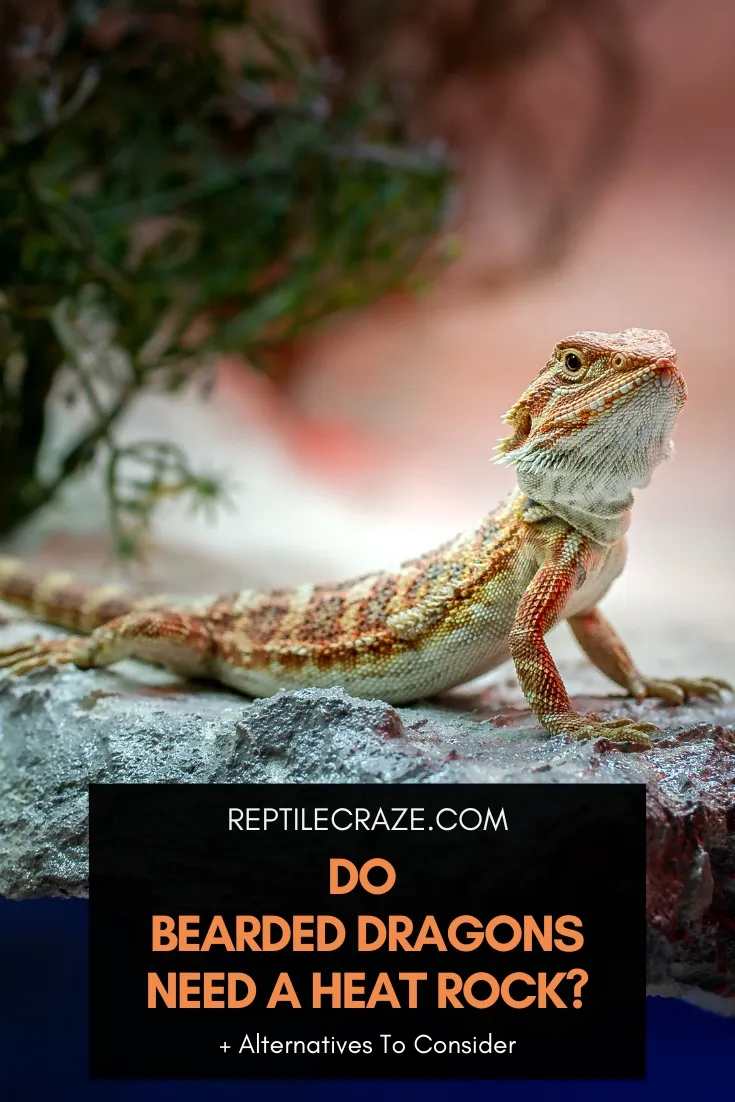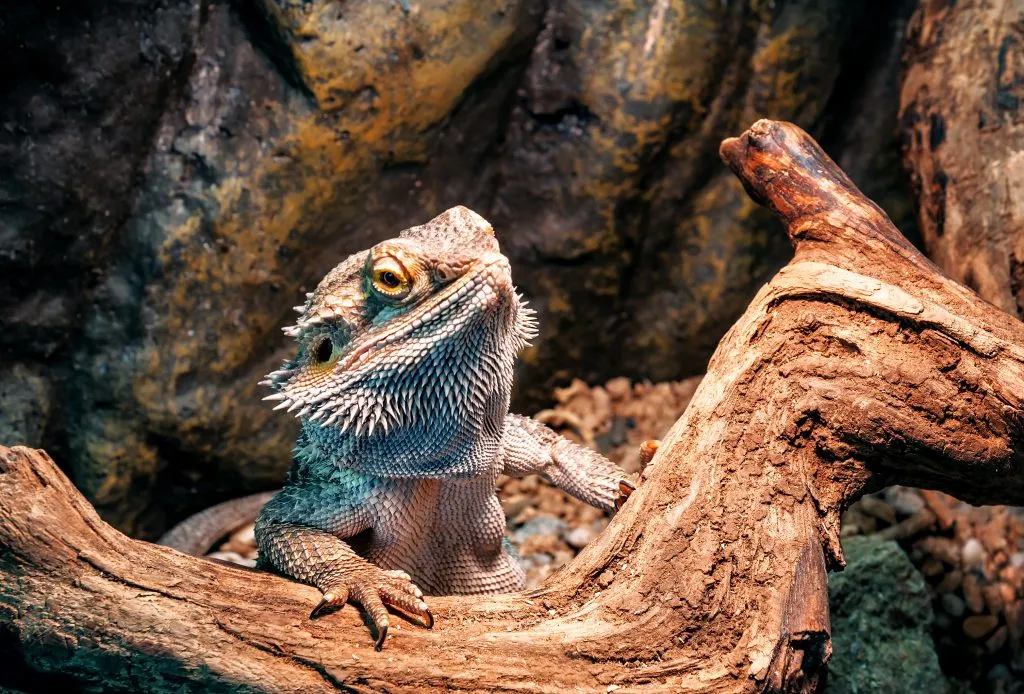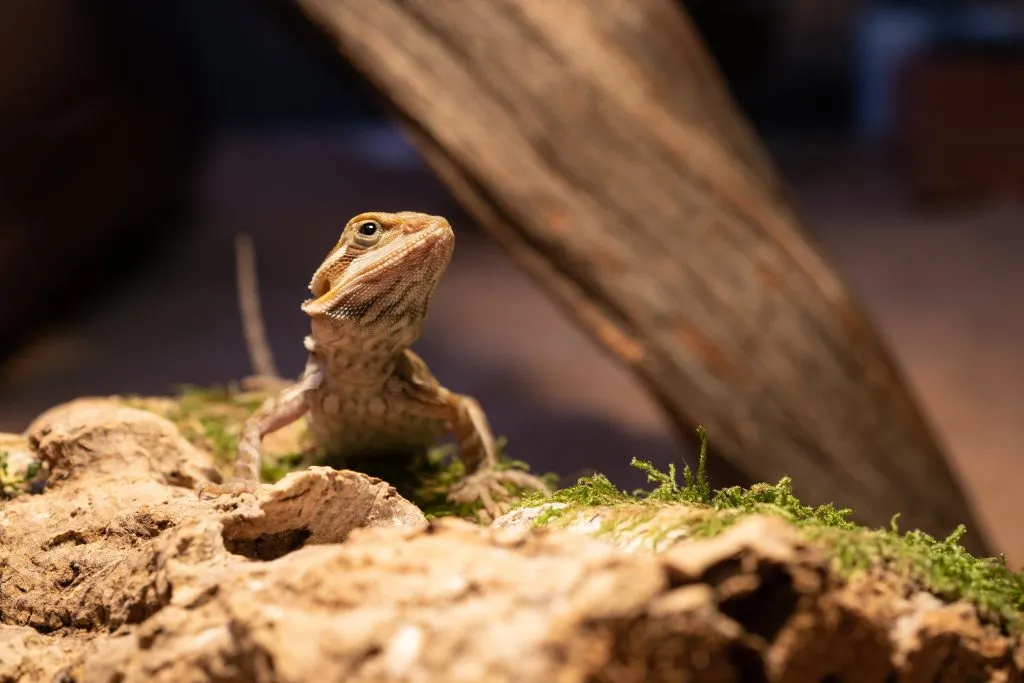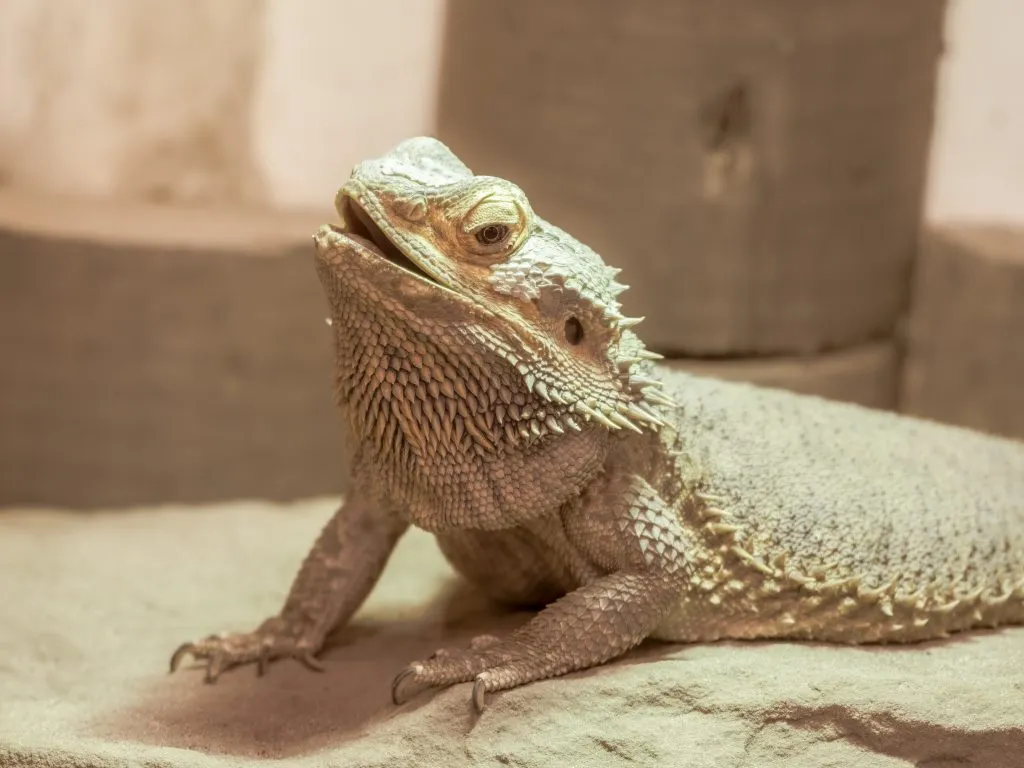
Keeping your bearded dragon’s
Although bearded dragons need a heat source, they should not be given heat rocks or heated caves in their tanks. Heat rocks easily get too hot and can cause severe burns and even death. Rather than using heat rocks, safer alternatives should be used when heating the
This article will look at the safe alternatives to heat rocks that you can use for your bearded dragon’s
Table of Contents
Why You Should Not Put A Heat Rock In Your Bearded Dragon Tank
There are three main reasons why you should not put a heat rock in your bearded dragon’s
- Inefficient heating from infrared-C
- A heat rock only heats the belly
- A heat rock can heat too fast/too hot for bearded dragons, causing burns
Inefficient Heating From Infrared-C

The electrical energy that’s converted to the heat that radiates from a heat rock’s surface, is infrared-C. This type of heat is weak and doesn’t penetrate a reptile’s skin, making it inefficient as well.
Because the heat doesn’t penetrate, the reptile won’t feel the full extent of the heat that it’s basking on – especially since the surrounding air is, most likely, not heated to the correct temperature.
A Heat Rock Only Heats The Belly
A heat rock furthermore only heats a bearded dragon’s belly – while most of their thermoreceptors (with which they sense heat) are on their backs because they’re supposed to get their heat from above.
By only heating the belly, you not only run the risk of your beardie not realising that they’re getting too hot but also not getting their metabolism high enough.
If your beardie’s metabolism is too sluggish, they won’t be able to properly digest their food. This can lead to their death.
Heats Too Fast/Too Hot, Causing Burns
Because the heat rocks can get too hot, your beardie runs the danger of getting severe burn wounds from touching or lying on the fake rock.
These wounds can be so severe that they can maim or even kill your bearded dragon.
What Burns Look Like On Bearded Dragons
Reptilian burn wounds look different than those on mammals, so any burns your bearded dragon may develop could look different than what you’d expect and would be looking out for.
Burns on reptiles like bearded dragons can look like:
- a reddening of the scales
- scabs
- swelling of the skin
- a loss of scales or scales that appear to be “peeling” with a white, red or black appearance. (See also Thermal Burns in Reptiles)
The most common places that bearded dragons get burn injuries from heat rocks are the abdomen, hind legs, and base of the tail.
What To Do If Your Bearded Dragon Got Burns From A Heat Rock

If you see – or suspect – that your bearded dragon got burned on a heat rock or in a heated cave, you must take them to the vet immediately and not try to take care of the burns at home.
The vet will be able to confirm how severe the burns are, and how large they are, and treat the burns accordingly.
Why Heat Rocks Can’t Create A Good Basking Spot
The correct basking spot temperature for bearded dragons is 104-107°F (40-42°C). This may seem excessive, but remember that this is only the basking spot, not the whole
In fact, the coolest part of the
However, when using heat rocks, the temperature may measure correctly, but the actual surface of the rock may be a lot hotter and can then cause the burns referred to before.
This is why the heat for the basking spot should come from above, as it would in nature. For this, you can use heat bulbs and ceramic heat emitters (CHEs).
Heat Bulbs Are Better Than Heat Rocks
Heat bulbs or heat lamps are the easiest way to get light and heat into your bearded dragon’s
When you’re installing these bulbs – whether incandescent or halogen – install them on the outside of the
Tip: Here is a list of the best heat lamps for your bearded dragon.
How Far From The Basking Spot Should A Heat Bulb Be Installed?
A good rule of thumb to follow when it comes to installing heat bulbs for your bearded dragon is that the bulb should be the following distances from the basking spot:
| Wattage bulb | Distance from the basking spot |
| 50-watt | 5-7 inches |
| 75-watt | 7-9 inches |
| 100-watt | 10-12 inches |
However, always make sure that you keep an eye on the actual temperature through the use of thermometers to ensure that the temperature doesn’t get either too high or too low.
You may find that your specific setup needs to have the 100-watt bulb 13 inches away from the basking spot, for example, to get the correct temperature.
If you have enough light for your beardie in their
Again, don’t add a red light to the
Ceramic Heat Emitters Are Better Than Heat Rocks

You should also not use a heat rock or heated hide to add heat to the
Even in this case, a CHE will work better than a heat rock or a heat mat.
Note! Always use fittings that are made specifically for CHEs when installing them and not just any light fittings that are used in bearded dragon tanks even though they are more expensive. The correct fittings won’t melt or cause short-circuiting or fires.
What Wattage CHE Bulb To Use In Your Bearded Dragon’s Tank
It’s extremely important that you use the correct wattage CHE bulb in your beardie’s
The following wattage CHE bulb is what you should use for different enclosures:
- 100-watt CHE bulb for 30–40 gallon enclosure
- 150-watt CHE bulb for 50–100 gallon enclosure
What Are The Differences Between Heat Bulbs And Ceramic Heat Emitters?
There are some fundamental differences between heat bulbs and ceramic heat emitters that will determine when you use them.
Below are the main differences between heat bulbs and CHEs – which should not be confused with the normal light bulbs or UV bulbs which may be used in bearded dragons and other reptile tanks.
| Heat Bulbs | Ceramic Heat Emitters (CHEs) |
| Emits both light and heat | Only emits heat |
| Ideal to use in a bearded dragon | Ideal to use in a bearded dragon |
| Only used during the day | May be used during the day and the night, depending on the lighting/heating setup of your bearded dragon |
| Generally uses more electricity than CHEs | Generally uses less electricity than heat bulbs |
| Must be used with caution and along with a thermometer to ensure that the |
Basic Safety Tips For Installing Heat Bulbs And Ceramic Heat Emitters

When you’re installing the heat bulbs and/or ceramic heat emitters for your bearded dragon’s
- Always ensure that your bearded dragons can’t touch the bulb – whether a heat bulb/basking light or CHE – directly as this will cause severe burns and even death from those burns.
- Test your setup for your bearded dragon’s
tank with regard to heat, humidity, etc. while your beardie isn’t in thetank . If necessary, you can put them in a quarantinetank for a few days while you figure out the exact setup of their permanenttank . - Always measure the temperature inside your bearded dragon’s
tank with a thermometer made for the job to ensure that the temperature gradient remains stable and correct. - If you find that the basking spot is getting too hot, move the bulb further away from the
tank . For example, if it was 5 inches above the basking spot, move it to 6 inches, wait a while, and then measure the temperature again. Continue moving elements around until everything is perfect before settling your beardie back into theirtank . - Ensure that you use the correct fittings for the heat lamps, as using the wrong ones can lead to the fittings melting or even causing fires.
Conclusion
If you need to add more heat to your bearded dragon’s
Instead of using heat rocks or even heated caves, use a heat bulb during the day and a ceramic heat emitter at night, as required, along with a thermometer.
- Enchi Ball Python: A Unique and Stunning Morph of Python regius - March 27, 2025
- Emerald Tree Monitor: The Enigmatic Green Guardian of the Rainforest - March 26, 2025
- The Egyptian Cobra (Naja haje): A Fascinating Serpent - March 25, 2025
